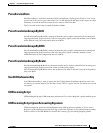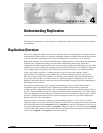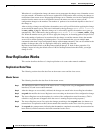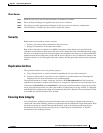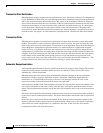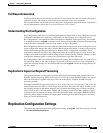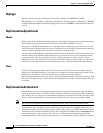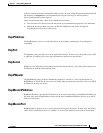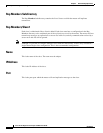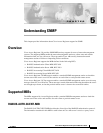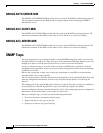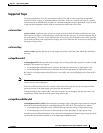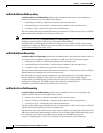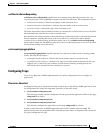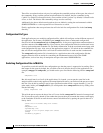
4-7
Cisco Access Registrar 3.5 Concepts and Reference Guide
OL-2683-02
Chapter 4 Understanding Replication
Replication Configuration Settings
If the slave should go down or otherwise be taken off line, the value of RepTransactionArchiveLimit and
the frequency of aregcmd saves will determine how long the slave may be off-line before a
full-resynchronization will be required.
There are two reasons why a slave server should have an archive:
1. The slave must save the last received transaction for resynchronization purposes (at a minimum).
2. Should the master go down, the slave can then be configured as the master and provide
resynchronization services to other slaves.
RepIPAddress
The RepIPAddress value is set to the IP Address of the machine containing the Access Registrar
installation.
RepPort
The RepPort is the port used to receive of replication messages. In most cases, the default value (1645)
is sufficient. If another port is to be used, the interfaces must exist in the machine.
RepSecret
RepSecret is the replication secret shared between the master and slave. The value of this setting must
be identical on both the master and the slave.
RepIPMaster
The RepIPMaster setting indicates whether the machine is a master or a slave. On the master, set
RepIPMaster to TRUE. On the slave set it to FALSE. Only the master may have this value set to TRUE
and there can be only one master.
RepMasterIPAddress
RepMasterIPAddress specifies the IP Address of the master. On the master, set RepMasterIPAddress to
the same value used in RepIPAddress above. On the slave, RepMasterIPAddress must be set to the IP
Address of the master.
RepMasterPort
RepMasterPort is the port to use to send replication messages to the master. In most cases, the default
value (1645) is sufficient; however, if another is to be used, the interfaces must exist in the machine.



